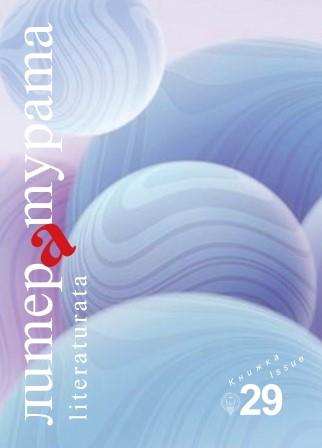Един мъдър грешник по име Иехуда от Кериот: Образът на Юда в романа на Николай Райнов „Между пустиня- та и живота
A Wise Sinner Named Judas Iscariot: The Image of Judas in Nikolay Raynov’s Novel “Between the Desert and the Life”
Author(s): Preslava PenevaSubject(s): Language and Literature Studies, Studies of Literature, Bulgarian Literature, Philology, Theory of Literature, Sociology of Literature
Published by: Софийски университет »Св. Климент Охридски«
Keywords: literary interpretations of Christianity; Judas Iscariot; Jesus Christ; Mary Magdalene; betrayal; the traitor archetype; biblical apocrypha
Summary/Abstract: The following interpretation of Nikolay Raynov’s novel “Between the desert and the life” (1919) aims to analyze in depth the character of Yehuda of Keriot (Judas Iscariot), to bring out the main similarities and differences between the character of Nikolay Raynov and other literary and apocryphal interpretations of the betrayer of Christ, as well as to propose a new direction for analysis of the named character based on different psychological and philosophical models. The first part of the text examines the influence of Miriam of Migdol (Mary Magdalene) on Yehuda of Keriot and the parallels between her image and the figure of the Devil. The second part interprets the image of Yehuda through the lens of the Nietzschean theory of Dionysian and Apollonian characteristics. The third part examines the relationship between Yehuda of Keriot and Yeshu bar Yosef (Jesus Christ) and how this relationship transforms Yehuda’s essence in the direction from unbelief to self-sacrifice. The interpretation offers juxtapositions and parallels to other literary works that feature interpretations of the biblical Judas Iscariot, such as Dante Alighieri’s “Divine Comedy” (1320), Leonid Andreev’s “Judas Iscariot” (1907), Mikhail Bulgakov’s “The Master and Margarita” (1928) and “The Last Temptation of Christ” (1955) by Nikos Kazantzakis. Present are references to other literary figures, such as Fyodor Dostoevsky, Victor Hugo, Jean-Baptiste Moliere, Sergei Yesenin.
Journal: Литературата
- Issue Year: XVI/2022
- Issue No: 29
- Page Range: 282-300
- Page Count: 19
- Language: Bulgarian
- Content File-PDF

